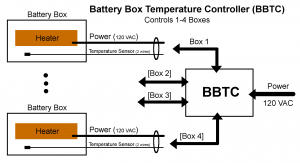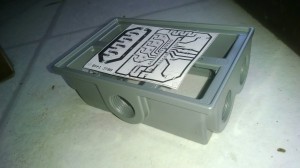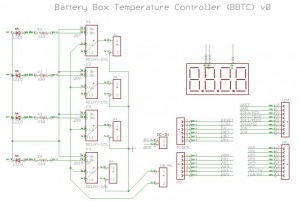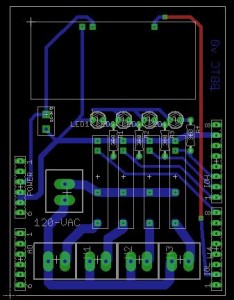Introduction
This posts introduces the design of an open-source custom electronic device that will be used to monitor and control the temperature of up to four battery boxes.
Background
Electric vehicle range is greatly reduced by cold batteries and the latest lithium battery specs require temperatures above 32F for charging. So the EV batteries need to be thermally managed in cold winter climates (like Chicago) to have acceptable winter range and to stay within spec for lithium batteries.
Heating Batteries With Nichrome Wire
Nichrome wire heats up when current passes through it. A ‘battery thermal wrap’ like this contains nichrome wire and is plugged into 120 V AC to keep a (starter) battery heated:
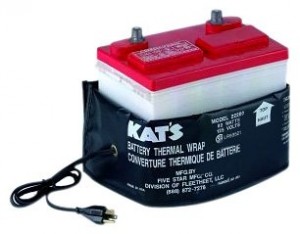
Insulated Battery Box With Heater
A ‘battery thermal wrap’ can be disassembled to repurpose the nichrome wire inside. Here is an example of an insulated EV battery box with a nichrome wire heater on the bottom:
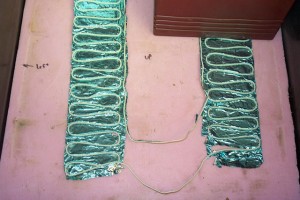
With such an insulated battery box and heater, battery temperatures can be increased in the winter.
Monitoring and Controlling Battery Box Temperature
The temperature of the batteries is monitored to make sure they are above 32F and optimally more like 72F. A temperature sensor, like an electronic thermometer, will be placed on the top middle of the batteries in the box. An Arduino microcomputer will read the temperature sensor and display the current temperature on a small LCD. The heater will also be turned on and off by the Arduino acting as a thermostat. The Arduino will turn on the heater if the battery temperature is below a ‘preset minimum temperature’, eg, 32F and turn off the heater if the temperature goes above a ‘preset maximum temperature’, eg. 72F. A user-programmable feature will be implemented to allow setting of the minimum and maximum temperature points.
Arduino Microcomputer and Expansion “Shield”
Here is an off-the-shelf Ardunio Uno board (available at Radio Shack and many places online for about $25):
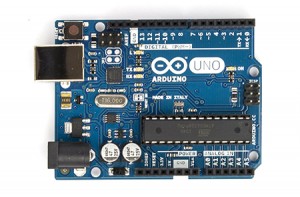
One of the great features of the Arduino is that they can be expanded by installing one or more “Shields” on top (eg, a “daughter boards”). There are 100’s of shields available listed here: http://shieldlist.org/ Here is an example ‘stack of shields’ on an Arduino:
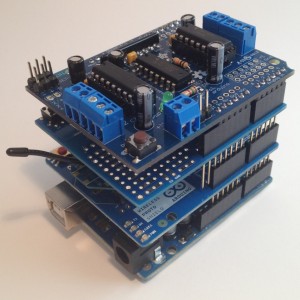
Battery Box Temperature Controller (BBTC)
The Battery Box Temperature Controller described here will be developed as an Arduino Shield.
The BBTC will have these features:
- 4 relays to independently control up to 4 battery box heaters
- Each relay will handle 2A @ 120V AC (so each heater can be up to 240 watts)
- 4 temperature sensor connections
- A small LCD to display temperatures and to assist the user to program the temperatures
- Programming buttons (details forthcoming)
Please stay tuned for more posts on this topic as the development proceeds!

